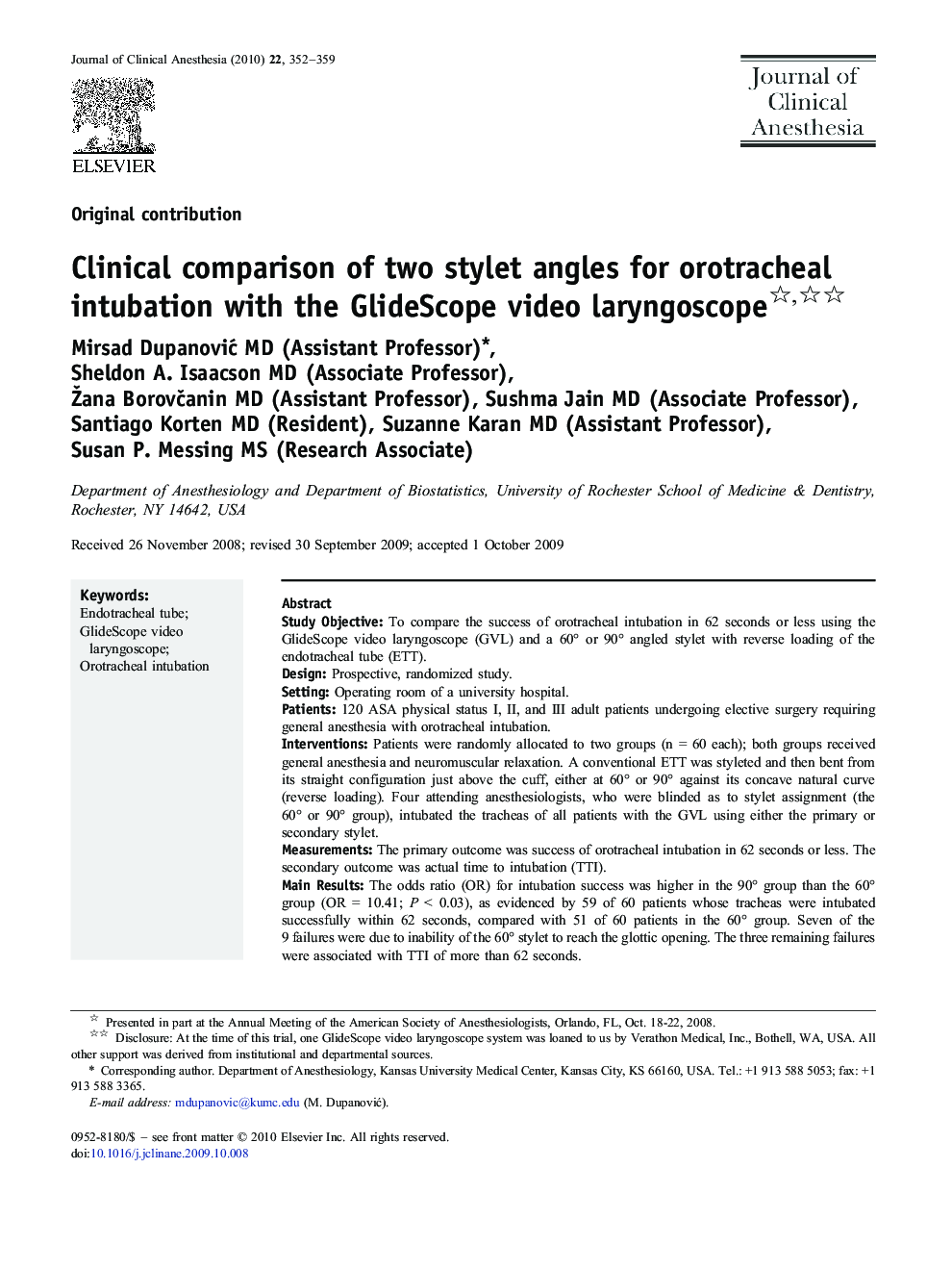| Article ID | Journal | Published Year | Pages | File Type |
|---|---|---|---|---|
| 2763071 | Journal of Clinical Anesthesia | 2010 | 8 Pages |
Study ObjectiveTo compare the success of orotracheal intubation in 62 seconds or less using the GlideScope video laryngoscope (GVL) and a 60° or 90° angled stylet with reverse loading of the endotracheal tube (ETT).DesignProspective, randomized study.SettingOperating room of a university hospital.Patients120 ASA physical status I, II, and III adult patients undergoing elective surgery requiring general anesthesia with orotracheal intubation.InterventionsPatients were randomly allocated to two groups (n = 60 each); both groups received general anesthesia and neuromuscular relaxation. A conventional ETT was styleted and then bent from its straight configuration just above the cuff, either at 60° or 90° against its concave natural curve (reverse loading). Four attending anesthesiologists, who were blinded as to stylet assignment (the 60° or 90° group), intubated the tracheas of all patients with the GVL using either the primary or secondary stylet.MeasurementsThe primary outcome was success of orotracheal intubation in 62 seconds or less. The secondary outcome was actual time to intubation (TTI).Main ResultsThe odds ratio (OR) for intubation success was higher in the 90° group than the 60° group (OR = 10.41; P < 0.03), as evidenced by 59 of 60 patients whose tracheas were intubated successfully within 62 seconds, compared with 51 of 60 patients in the 60° group. Seven of the 9 failures were due to inability of the 60° stylet to reach the glottic opening. The three remaining failures were associated with TTI of more than 62 seconds.ConclusionsThe 90° angled malleable stylet with reverse loading of the ETT provided more reliable ETT delivery to the glottic opening and had a higher success rate than the 60° stylet.
